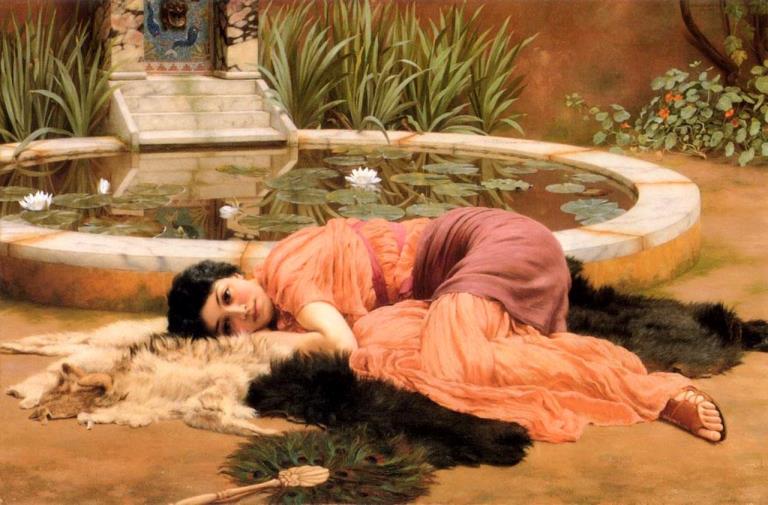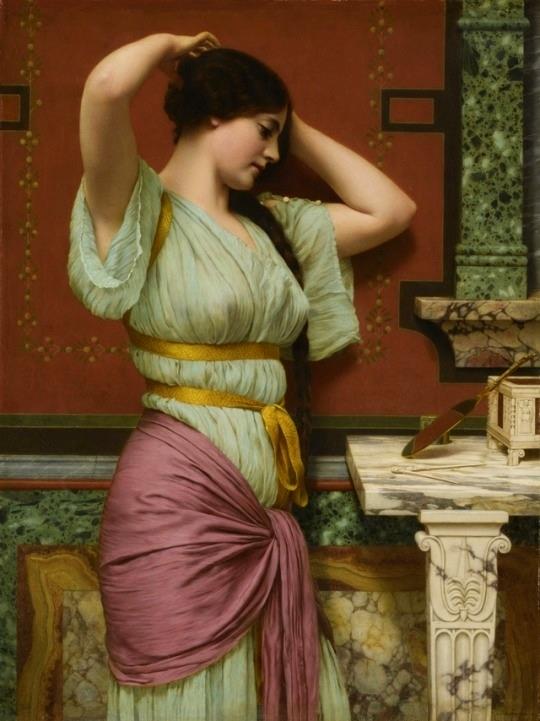Artist John William Godward's Paintings
John William Godward was born on August 9, 1861, in Wimbledon, a London suburb, the eldest of five children to an affluent religious family. The Godwards' family heritage was insurance, and this was the career that was expected for the eldest son. His soul, however, was in art, and his family did not value his education. Godward relocated to another London area, Chelsea, where he rented a property, as a result of the family feud. The artist was enamoured with Italy since his childhood, and he created pictures of attractive Italians he encountered in England. In 1905, the occasion motivated him to travel to the nation of his aspirations. The artist's residence was located close to the Stamford Bridge stadium, which had been largely abandoned for many years before becoming the home arena of the Chelsea football club, which was created the same year. The incessant noise from the stadium, which was now interfering with the artist's tranquil work, led him to depart for Italy for a time.
At the time, the artist's ancient Roman subjects were timely. The thriving British Empire was on par with the old Roman Empire. Godward's paintings were purchased, and his name became well-known.
John William Godward began travelling to Italy in 1910 and chose to stay permanently in Rome in 1912. This was due to a number of factors. Along with his love for this place, Godward had a crush on one of the models who relocated to Rome, and the situation in art began to alter during those years. As classicism fell out of favour, other artistic movements began to emerge in England. By that time, Godward's father had died, but his mother had not forgiven her son for fleeing England and being swept away by an average Italian lady.
John William Godward most likely worked in the same workshop as I.E. Repin. His painting "Belvedere" was given a gold medal at the International Exhibition in Rome in 1913, whereas one of Godward's favourite pieces, "The Golden Watch," which was shown at the same exhibition the same year, went unrecognised. In 1921, John William Godward finds that Rome has lost its allure for him and returns to England, where, with the death of the President of the Royal Academy, Edward Poynter, in 1919, classical art finally relinquished its hegemony. Godward was derided by critics as a clone of Alma-Tadem, a pedant, an artist of the dull world, and a sluggish woman.
Because he did not pay enough attention to his food, the artist's health worsened, and he acquired ulcerative dyspepsia (Godward took a pot of beef stew at the beginning of each week, then ate this stew all week). Dyspepsia was accompanied by insomnia and despair. John William Godward At 61 years old , committed himself by gas poisoning on December 13, 1922. He stated shortly before his death that a person should not live above the age of 60. Godward also stated that the globe was too small for him and Picasso. Picasso, according to John William Godward, was demented, and his work was a source of evil.
Following her son's suicide, the artist's mother burned all of his documents and images. She died in 1935, at the age of 100. Only the artist's sister maintained a positive attitude toward him.
Godward was mostly forgotten after his death, and interest in him did not resurface until the 1970s. Godward now ranks with painters such as Lawrence Alma-Tadema, Adolphe William Bouguereau, Leighton, and John William Waterhouse in terms of appeal among collectors and publishers.


























































































































No comments:
Post a Comment